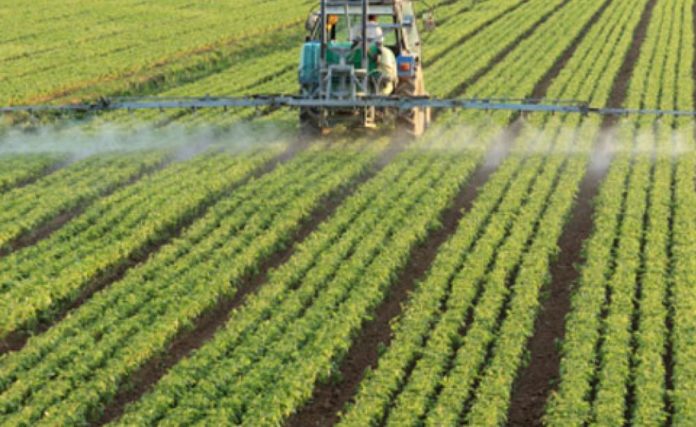
FARMERS and gardeners have been asked to follow the guidelines governing the spraying of chemicals on their land after excessive levels of pesticides were detected in drinking water sources in County Limerick.
Irish Water is appealing to users of herbicides to exercise caution when applying herbicides to their lands with the National Pesticides and Drinking Water Action Group (NPDWAG) coordinating the campaign to reduce the level of contamination.
Last year, excessive levels of pesticide were detected in the Abbeyfeale, Newcastle West and Foynes Estuary Water Supply Schemes, and while Irish Water emphasises that there is no threat to public health, they say it is imperative that farmers are mindful of best practice when spraying their lands.
Analysis of the three County Limerick water schemes over the past two years showed traces of the herbicide MCPA, mostly at very low levels.
MCPA is used mainly for eradicating rushes, a problem for many years on Irish farms and one that looks like continuing for many more years. It is also found in other weed killer formulations used by gardeners and growers, so its use is quite widespread.
A single drop of pesticide can breach the drinking water limit in a small stream for up to 30 kilometres.
Drinking water monitoring results show that a number of pesticides commonly used on grassland, such as MCPA, are being detected more frequently.
Commenting ahead of the current spraying season, Irish Water’s Regional Drinking Water Compliance Specialist Deirdre O’Loughlin said they were continuing their extensive investment programme in improving water and wastewater services.
“Providing safe, clean drinking water is our first priority. 82 per cent of our drinking water comes from surface water sources such as rivers, lakes and streams which are vulnerable to contamination from land and animal run-off.”
Limerick City and County Council senior engineer Anne Goggin said that the use of pesticides has played a central role in preparing fields and gardens for new growth.
“However, the effects of this can be far reaching and more and more detections of pesticides in drinking water are being found across the country.”
“MCPA, which is commonly used to kill rushes on wet land, is the main offender, and careless storage, handling and improper application means it ends up in our drinking water leading to breaches of the drinking water regulations,” she explained.
Operating under the auspices of the Department of Agriculture, Food and the Marine, all of the key stakeholders are represented on the NPDWAG including other Government departments and agencies; local authorities; industry representative bodies; farming organisations; water and amenity sector groups.
NPDWAG Chairman Dr Aidan Moody said that the continued engagement of all stakeholders, was needed to tackle this issue.
“Users of pesticides should make sure that they are aware of the best practice measures that should be followed to protect water quality,” he added.
The basic steps in reducing pesticide risks are –
Choose the right pesticide product
Read and follow the product label
Determine the right amount to purchase and use
Don’t spray if rain or strong wind is forecast in the next 48 hours
Make sure you are aware of the location of all nearby water courses
Comply with any buffer zone specified on the product label to protect the aquatic environment.
Mark out the specified buffer zone from the edge of the river or lake or other water course
Never fill a sprayer directly from a water course or carry out mixing, loading or other handling operations beside a water course
Avoid spills, stay well back from open drains and rinse empty containers 3 times into the sprayer.
Store and dispose of pesticides and their containers properly.
A video on the correct use of MCPA can be seen on Irish Water’s YouTube channel at https://youtu.be/xQqtZ7jifUs
Information leaflets on pesticide use are also available to download from the Teagasc website.
More environmental news here









